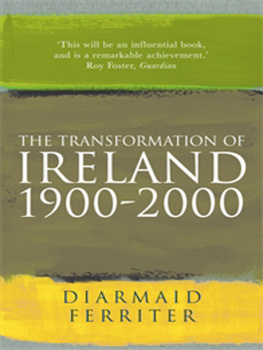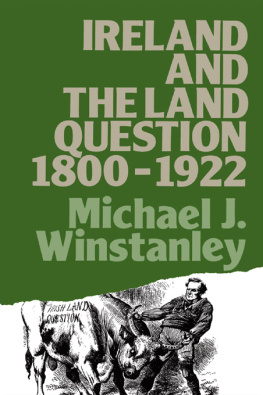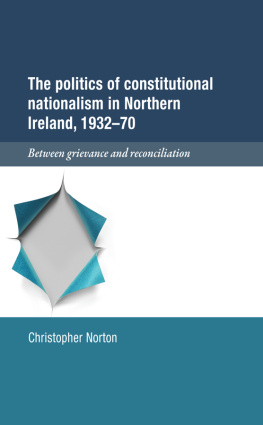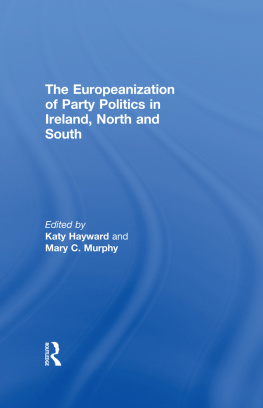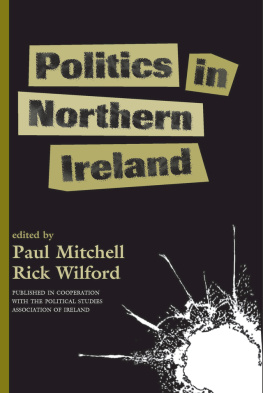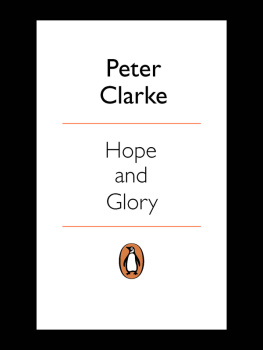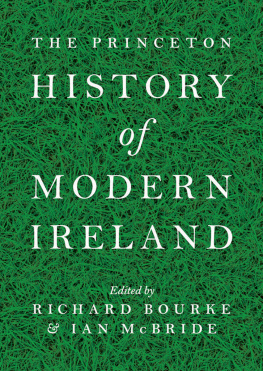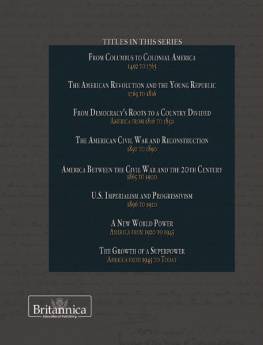THE TRANSFORMATION OF IRELAND 19002000
Ferriters book has set a new standard, unlikely to be surpassed for many years and he carries his scholarship lightly. Thisis no stuffy or over-erudite work, but one which is immensely readable from start to finish an impressive achievement.Marianne Elliott
It works grippingly his approach is judicious and empathetic he also has a fine ear for the ridiculous one of the greatstrengths of the book is to place very recent history against the experience of the whole century a rich and provocativestudy. Roy Foster, Guardian
A treasure-chest of images the books main joys are its scope and ability to fill in the social and cultural changes thatwere often masked by larger political events. It is a book that refuses easy answers to complex questions and reopens debateon almost every decade of twentieth-century life in Ireland. Dermot Bolger, Sunday Business Post
A marvellous read. Like no other recent history book, it brings out the deep class divisions that have always marked thisapparently conservative country. It also provides ample material to show that beneath the polar ice cap of nationalist politicsthere has lurked an irreverent, witty and rebellious spirit Ferriters book stands out because it presents a much more texturedview. Kieran Allen, Sunday Tribune
Deeply honest A rich study of Ireland in the twentieth century.
It is based on a thorough combing of the available literature and an examination of key primary sources. The judgments areusually fair and convincing. The author honestly grapples with the darker aspects of Irish history as well as those whichengender national pride It is a veritable mine of information. Tom Devine, Herald (Glasgow)
An extraordinary book most readable and often highly entertaining.
His prose is lively. He can deploy a general irony. He uses quotations, often brilliantly, as a narrative technique. [But]to say that the book is entertaining is not to underrate is scholarly credentials.
Richard Collins, Irish Examiner
Ferriter deserves great credit for taking a holistic approach to the narrative of twentieth-century Ireland. Paul Bew, Sunday Times
This is Ireland from below, seen through the lives that, throughout a turbulent century, still had dinner at lunchtime Ferriter places political events within the context of a complex mesh of social, cultural and economic history a major achievement.Ray Ryan, New Statesman
Like the candle from which Dev made his gaol key, the Ireland of the early twentieth century was made of soft wax, waitingto be moulded to bear the imprint of strong men. Ferriter traces these impressions skilfully, pulling up satisfying gems fromthe well of the past Ferriters research is wonderfully widely-sourced. Dubliner
This is total history, history from below as well as above Ferriter has delved into the often ignored subjects, combedhis primary sources thoroughly and consequently is able to present the reader with some fascinating insights. Patrick West,Literary Review
Ferriters superb study recognises that there was much more to Irish life in the period than high politics, cultural renaissanceor religious conflict. Scotsman
The Transformation of Ireland is that rare work in history in possession of both the width of research and information required by the form, and the depthof theme and feeling expected from more narrow and focused books. As an achievement, it bears comparison to Eric HobsbawmsAge of Extreme: A History of the World19141991. Charles Foran, AsianReview of Books
DIARMAID FERRITER was born in Dublin in 1972. He is a lecturer in history at St Patricks College, Dublin City University. He is the authorof A Nationof Extremes: the Pioneers in Twentieth-century Ireland and Lovers of Liberty? Localgovernment in Twentieth-century Ireland, and co-author with Colm Tibn of TheIrish Famine. He is a regular broadcaster with RT.
THE TRANSFORMATION
OF IRELAND
19002000
DIARMAID FERRITER

First published in Great Britain in 2004 by
Profile Books Ltd
3A Exmouth House
Pine Street
Exmouth Market
London EC1R 0JH
www.profilebooks.com
This eBook edition first published in 2010
Copyright Diarmaid Ferriter, 2004, 2005, 2010
The moral right of the author has been asserted.
Typeset in Garamond 3 by MacGuru Ltd
This eBook is copyright material and must not be copied, reproduced,transferred, distributed, leased, licensed or publicly performed or used inany way except as specifically permitted in writing by the publishers, asallowed under the terms and conditions under which it was purchased or asstrictly permitted by applicable copyright law. Any unauthoriseddistribution or use of this text may be a direct infringement of the authorsand publishers rights and those responsible may be liable in law accordingly.
A CIP catalogue record for this book is available from the British Library.
eISBN 978-1-84765-081-8
For Sheila Maher: my love, my life
CONTENTS
M any people contributed to the gestation and completion of this book, not least my colleagues in the History Department atSt Patricks College: Dire Keogh, Carla King, Marion Lyons, Matthew Stout and especially James Kelly, who provided friendship,professional support and sound advice. Yet again, I have to thank my family from the bottom of my heart, for years of warmth,love, understanding, humour and loyalty. They are as important as friends and confidants, as parents and siblings. I cantexpress in words my gratitude to them Nollaig and Vera, Cian, Muireann and Trona. As the family has grown, so has the loveand companionship, and I am indebted to Deirdre Mulligan, Lar Joyce, Lucy and Catherine Maher, Rose Cottam, Luan, Sofra,Liberty and Rachel. Tom and Anne Maher have been dream in-laws; I am constantly humbled by their generosity and kindness.Kevin Maher, the jewel in the crown of Irelands Diaspora, has been there from the beginning a better and closer friendone couldnt hope for; his friendship is accompanied by a creative mind that is unique and powerful, and a humour that isabsorbing and addictive. Ronan, Carmel, Karen and Rachel Furlong have a special place in the Ferriter hearts; their sustainedfriendship over many years has been inestimable.
Catriona Crowe has advised, encouraged and enthralled in equal measure; her suggestions have always been humane, insightful,clever and fun, as is her friendship. Colm Tibn and Deirdre McMahon read the earlier drafts and made invaluable suggestions;they put a lot of effort into the manuscript; their contribution, friendship and generosity have been immense and are muchappreciated. Greg Prendergast has been there through thick and thin; providing laughter, insight and companionship, as haveMark Duncan, Stephen Cullinane, Paul Rouse, Paul Murphy, Aisling Caden, Adrienne Egan, Martin Walsh, Anne Marie Kearney, LisaFinnegan, Mark Hyland, Katie and Sen Condon, Leo Casey, Michelle Thomas, Pat Leahy, Grinne Gavigan, Grinne Seoige, DavidWhelan, Antoinette Prout, Feargal de Frine, Heather and Euan Randall, John Rouse, Sen Kearns, William Murphy, Maeve Coogan,Dave and Annalise Heron, Georg Grote, Lindsey-Earner Byrne, David Maguire, Tom, Anna, Carla and Melanie Briggs, and Peterand Olivia Casey.
Mary Daly and Margaret MacCurtain have encouraged and advised me for many years, as have Tim ONeill and Maeve Bradley; onceagain I want to record my gratitude. Michael Laffan, Eoin OSullivan, Tom Garvin, Ger Garland, Victor Laing, the late PeterYoung, Michael Kennedy, Susannah Riordan, Philip Harvey, Fearghal McGarry, Brian Hanley and Pauric Travers have always beengenerous with their time and thoughts.

